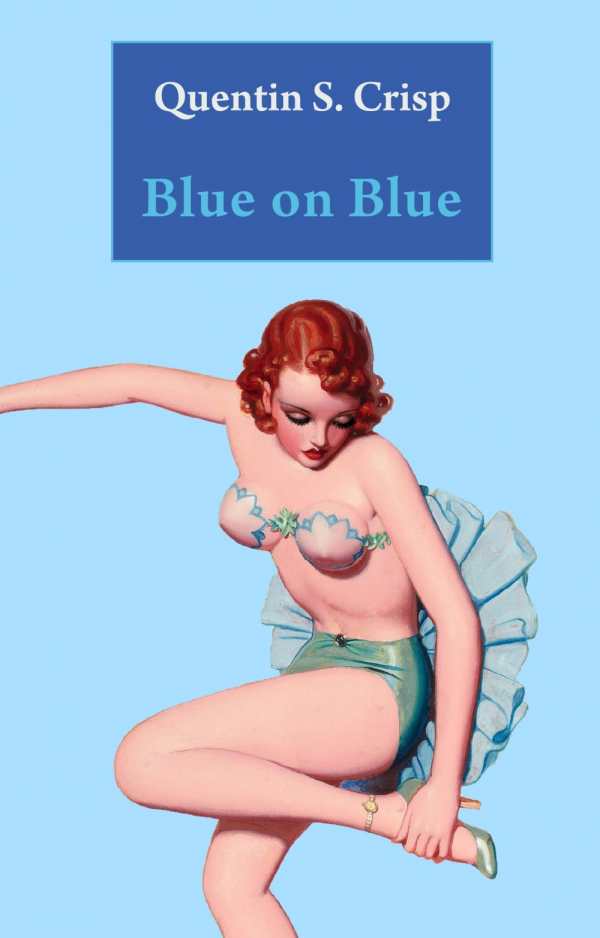Blue on Blue
Blue on Blue‘s playful tone and Crisp’s inventive use of 1950s pop-culture icons will entertain adventurous readers of speculative fiction.
A blend of mysticism and absurdism, Blue on Blue is a short but densely packed novel that plays whimsically with concepts of alternate time streams, “magical Daoism,” pulp-magazine illustrations, parodies of pop-culture icons, and the ever-popular Pygmalion story of the artist who finds his own creation more desirable than the reality in which he lives.
That artist is Victor Sernik Winton, a moderately successful comic-book and magazine illustrator, and the heightened reality in which he lives is an artificially created parallel universe called the Alternative States of the American Fifties. Victor’s specialty is the depiction of alluring women to grace the covers of magazines, and his latest creation is a doozy. So enthralling is she that Victor wants to make her the centerpiece of an entire story, perhaps a series. So enthralling that he can’t seem to get his mind off her, no matter what.
In a rushing, endlessly digressive monologue, the reader experiences Victor’s stream of consciousness as he conceives of his ideal female character, speculates about her background and future adventures—then, in a sudden jolt, seems to recognize her in the form of an actual woman he encounters at an art exhibit.
Is she an avatar of his creation, an embodiment of the ideal female, or, as she claims, just “plain ol’ Jenny Mills”? And can he really get to know her, or, like the “Buena Vista Castle” at a nearby Southern California theme park, must she remain forever a hypnotic, distant vision?
Since the early 2000s, Quentin S. Crisp (not to be confused with the late English raconteur of similar name) has published a half-dozen books of supernatural, horror, and fantasy-flavored fiction. (Shrike was a 2009 finalist for the Shirley Jackson Award.) He’s also appeared in numerous printed and online fiction magazines and coedited a 2012 anthology entitled Dadaoism.
Blue on Blue‘s playful tone and Crisp’s inventive use of 1950s pop-culture icons will entertain adventurous readers of speculative fiction. If the ambiguous ending leaves some of them thoughtfully scratching their heads, well, that’s the price you pay for visiting a world where imagination and reality intermingle the way they do in the American Fifties.
Reviewed by
Bradley A. Scott
Disclosure: This article is not an endorsement, but a review. The publisher of this book provided free copies of the book to have their book reviewed by a professional reviewer. No fee was paid by the publisher for this review. Foreword Reviews only recommends books that we love. Foreword Magazine, Inc. is disclosing this in accordance with the Federal Trade Commission’s 16 CFR, Part 255.

